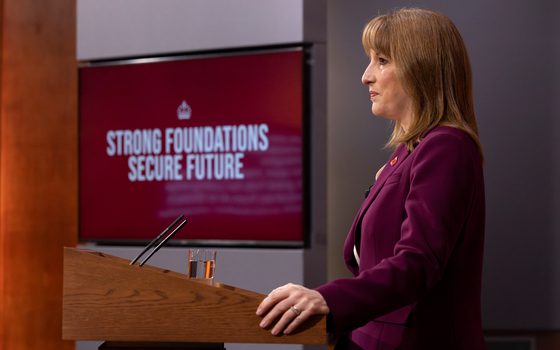How the Bank of England is wasting billions in public money boosting banking sector profits
The Treasury is predicted to cover £100bn worth of loses at the Bank of England in the next five years - there are better ways we could spend this money.
06 August 2024
With a new report showing the Treasury has covered over £45 billion worth of losses at the Bank of England since 2022 and £100 billion more expected in the next 5 years, it’s time we questioned why the Bank is making a loss in the first place and if money could be better spent. Across the world many central banks are making losses as their normal sources of income don’t meet their high costs, meaning they ask government treasuries for extra money or even create money to fill the gap. Yet often these costs are so high due to the extraordinary large payouts central banks are giving to the banking sector. In the UK, the Bank of England has sent commercial banks £70 billion since 2021. Even slight adjustments to the Bank’s operations could reduce these payments and ensure that public money is used to better achieve government objectives.
As we have explained before, the way some central banks across the world set interest rates for the wider economy is by paying interest on ‘reserves’ ( ‘reserves’ meaning the money private banks hold at central banks to settle payments with each other). When central banks set interest rates, they also decide the size of the interest payments they directly send to the banking sector. Higher interest rates mean bigger payments. Such a system for setting interest rates is largely a response to how quantitative easing (QE) massively increased the amount of reserves in the system, but this isn’t the only way interest rates can be set. Importantly, this post-QE system is a deviation from the norm. Previous operating systems implied no obvious transfers to the banking sector when interest rates are high or low.
“These subsidies, that boost bank profits, are so expensive that central banks are struggling to cover the costs with their own income.”
These subsidies, that boost bank profits, are so expensive that central banks are struggling to cover the costs with their own income (such as money they receive from government bonds, foreign currency reserves and regulatory levies). With income sources exhausted, central banks may instead draw down from capital reserves (profits that have been retained over time), yet these can be small, as most central banks tend to share profits with their government treasuries. Having costs outstrip income means the central bank is making a loss and exhausting all other money could mean available capital reaches zero. While such conditions would cause insolvency for a normal bank or business, central banks’ ability to create money means they can always meet cash obligations by creating more cash.
However, instead of creating money to cover costs, many central banks have instead preferred to ask for recapitalisation or to make deals with government treasuries to cover losses automatically. The latter is what the Bank of England does, and it has certainly been a costly decision, with the Treasury covering losses of over £45 billion since 2022 and £100 billion more expected in the next 5 years. In contrast, the Federal Reserve (Fed) in the US and the European Central Bank (ECB) in the Eurozone have both met interest payments by creating more reserves. The reason central banks may be cautious to create more reserves is that, while they do not risk ‘accounting insolvency’, they may risk ‘policy insolvency’ instead. That is, central banks can become constrained if the creation of money starts to interfere with stable inflation. Even so, the US and Eurozone both show that this limit is likely not in close reach, in these cases economists question if central bank losses matter.
While the ECB’s and Fed’s approach does not cost treasuries up front, this does not mean it is costless. The creation of new reserves has been balanced by a ‘deferred asset’, which tracks how much money is being created. When central banks return to profitability, this deferred asset will be drawn down and the money created will be destroyed. Therefore, while government treasuries would usually benefit from central bank profits, until the deferred asset is completely wound down they will not. In the US, this deferred asset is already over $180 billion dollars and winding it down will be no insignificant feat. Some speculate that, if these deferred assets last longer than expected, direct recapitalisation from treasuries may happen anyway.
Therefore, no matter how central banks try to cover the cost of bank subsidies, the bills will ultimately be picked up by government treasuries. However, instead of taking for granted a system where interest on reserves payments go directly into the pockets of big banks, we should consider if such large payments are necessary or if public money could be better used.
“NEF’s proposal for tiered reserves could directly reduce the payments to the banking sector, saving the Bank of England up to £11bn a year.”
NEF’s proposal for tiered reserves could directly reduce the payments to the banking sector, saving the Bank of England up to £11bn a year, while still allowing effective transmission of monetary policy. Such a scheme has been implemented in the Eurozone by the European Central Bank and has seen wide support from ex-prime minister Gordon Brown to economists at the Financial Times and the Guardian. Reducing these interest payments could give Treasuries more space to restore public services and make the investment our economy desperately needs. Furthermore, such a system may even be more effective at fighting inflation by reducing the bank subsidy, which may stimulate rather than depress bank activity.
Furthermore, if we take the levels of deferred assets central banks are willing to take on currently as an indication of the scale of losses central banks can manage, then there are arguments that public money could be used more effectively. For example, NEF’s proposal of a green interest rate scheme could see central banks offering a lower interest rate for banks making green loans. Such a scheme would imply a loss for the central bank and also a subsidy to the banking sector, but, as it would be targeted at green lending, it would also help the central bank better achieve its soon-to-be-restored secondary objective to support the net-zero transition. By implementing tiered reserves at the same time, the loss position of the central bank would not have to change. The central bank would still have the same control over interest rates and their pass-through to the economy, while ensuring the money it was giving to the banking sector was focused on achieving climate targets, implying better value for money.
In short, the losses central banks are making matter as they reflect how public money is being used. The banking sector is currently receiving tens of billions a year, while public services have been asked to find three billion pounds of extra cuts. We must ask why central banks can subsidise the banking sector while the government says it can’t afford to run public services. Slightly altering central bank operations to tier reserves and green interest rates could be a good start in better aligning public funds with social and environmental targets.
Image: iStock
Topics Banking & finance






